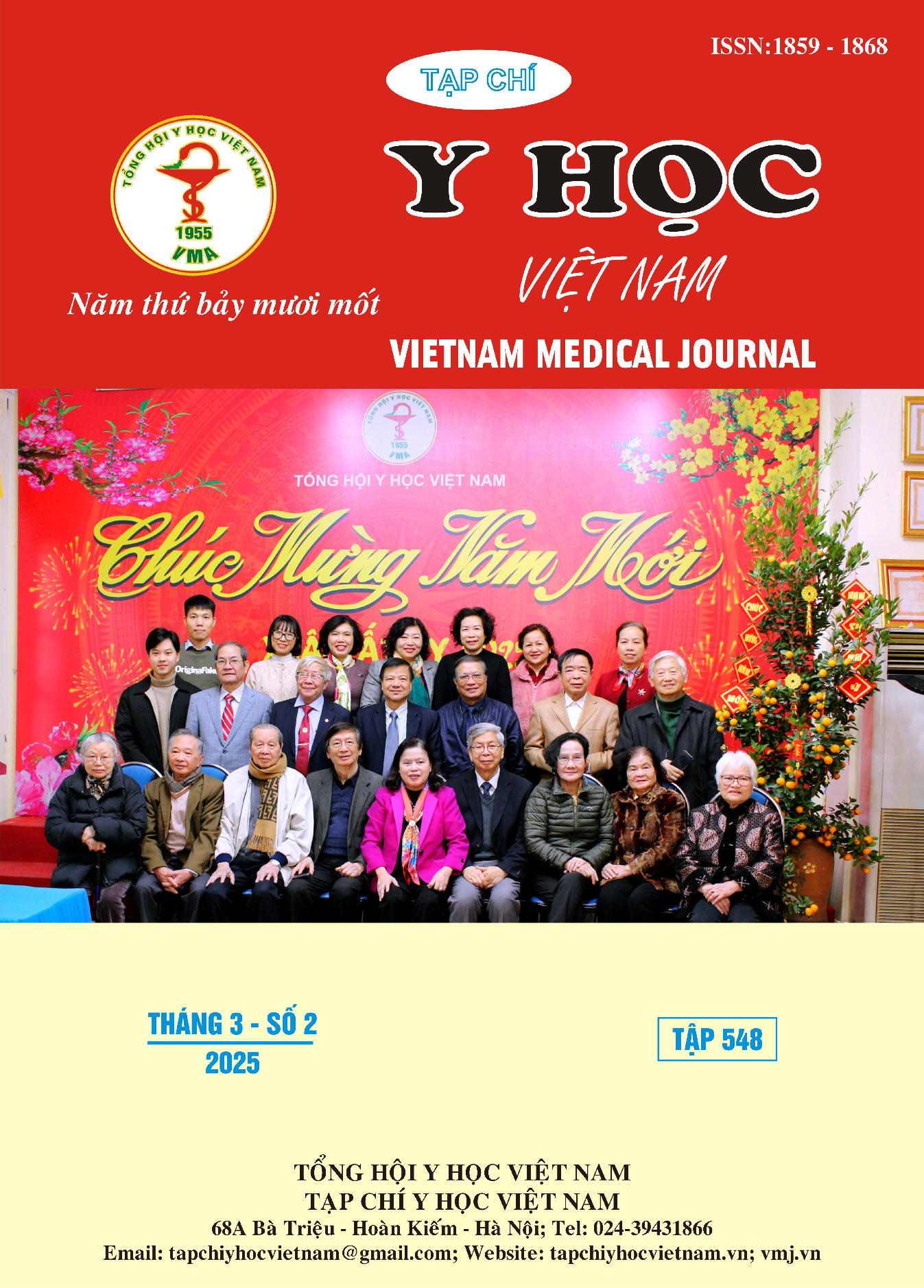CHARACTERISTICS OF KNOWLEDGE AND PRACTICE IN MEASURING ANKLE –BRACHIAL INDEX AMONG INTENSIVE CARE UNIT NURSES
Main Article Content
Abstract
Background: Sequential Compression Devices (SCD) help prevent deep vein thrombosis when anticoagulants are contraindicated, especially in intensive care unit (ICU) patients. The technique of measuring Ankle Brachial Index (ABI) is used to screen for lower limb peripheral artery disease and adjust the pressure settings to reduce the risk of complications related to SCD. ABI measurement is a necessary skill for ICU nurses. Objective: To assess the knowledge and practice of ABI measurement among ICU nurses. Method: A descriptive cross-sectional study was conducted on 42 ICU nurses at University Medical Center Ho Chi Minh City. A set of questions validated by an expert panel was used to assess the knowledge and practice of ABI measurement. Results: The set of 20 questions had I-CVI ranging from 0.88 to 0.986; S-CVI/Ave from 0.85 to 0.94; and S-CVI/UA from 0.71 to 0.95. The percentage of nurses who had been trained in ABI measurement and had practiced measuring ABI were 52.4% and 32.7%, respectively. After assessment, 33.3% of nurses achieved a passing score. The overall score was 12.21 ± 0.91, with knowledge scores at 4.36 ± 0.93 and practice scores at 7.86 ± 0.84. Conclusions: ICU nurses' knowledge and practice of ABI measurement are not optimal. Effective training programs are needed to improve ABI measurement competency.
Article Details
Keywords
: Ankle–brachial index, nurse, intensive care unit.
References
2. Wang BY, Chou YH, Chung CT, et al. Association of Peripheral Arterial Occlusive Disease and Deep Venous Thrombosis with Risk of Consequent Sepsis Event: A Retrospective Population-Based Cohort Study. Int J Environ Res Public Health. 2022;19(11):6710. Published 2022 May 31. doi:10.3390/ijerph19116710.
3. Weller CD, Team V, Ivory JD, et al. ABPI reporting and compression recommendations in global clinical practice guidelines on venous leg ulcer management: A scoping review [published correction appears in Int Wound J. 2019 Aug;16(4):1074. doi: 10.1111/iwj.13165]. Int Wound J. 2019;16(2):406-419. doi:10.1111/iwj. 13048
4. Aboyans V, Criqui MH, Abraham P, et al; American Heart Association Council on Peripheral Vascular Disease; Council on Epidemiology and Prevention; Council on Clinical Cardiology; Council on Cardiovascular Nursing; Council on Cardiovascular Radiology and Intervention, and Council on Cardiovascular Surgery and Anesthesia. Measurement and interpretation of the ankle-brachial index: a scientific statement from the American Heart Association. Circulation. 2012 Dec 11;126(24):2890-909. doi: 10.1161/ CIR.0b013e318276fbcb.
5. Lanéelle D, Hoffmann C, Stivalet O, et al. Vascular medicine residents lack adequate training for limb pressure measurement: A nationwide survey in France. Vasc Med. 2019; 24(5): 452-454. doi:10.1177/ 1358863X19867759
6. Lynn MR. Determination and quantification of content validity. Nurs Res. 1986;35(6):382-385.
7. Yan T, He W, Hang C, et al. Nurses' knowledge, attitudes, and behaviors toward venous thromboembolism prophylaxis: How to do better. Vascular. 2021;29(1):78-84. doi:10.1177/ 1708538120933782.
8. Saab MM, McCarthy B, Andrews T, et al. The effect of adult Early Warning Systems education on nurses' knowledge, confidence, and clinical performance: A systematic review. J Adv Nurs. 2017;73(11):2506-2521. doi:10.1111/jan.13322.
9. Trần Thị Thanh Tâm. Tính giá trị và độ tin cậy bộ câu hỏi khảo sát kiến thức, thái độ, thực hành của điều dưỡng về chương trình phục hồi sớm sau phẫu thuật (ERAS). Tạp chí Y học Việt Nam. 2023; (1): 527.


